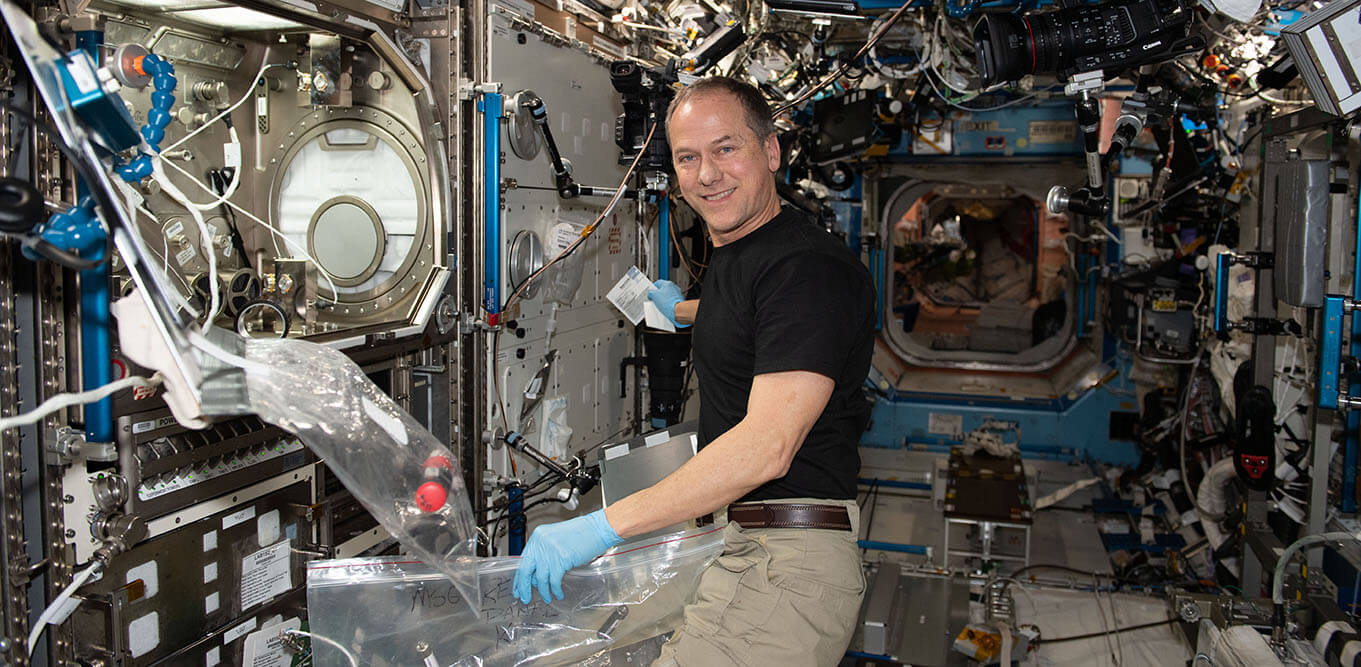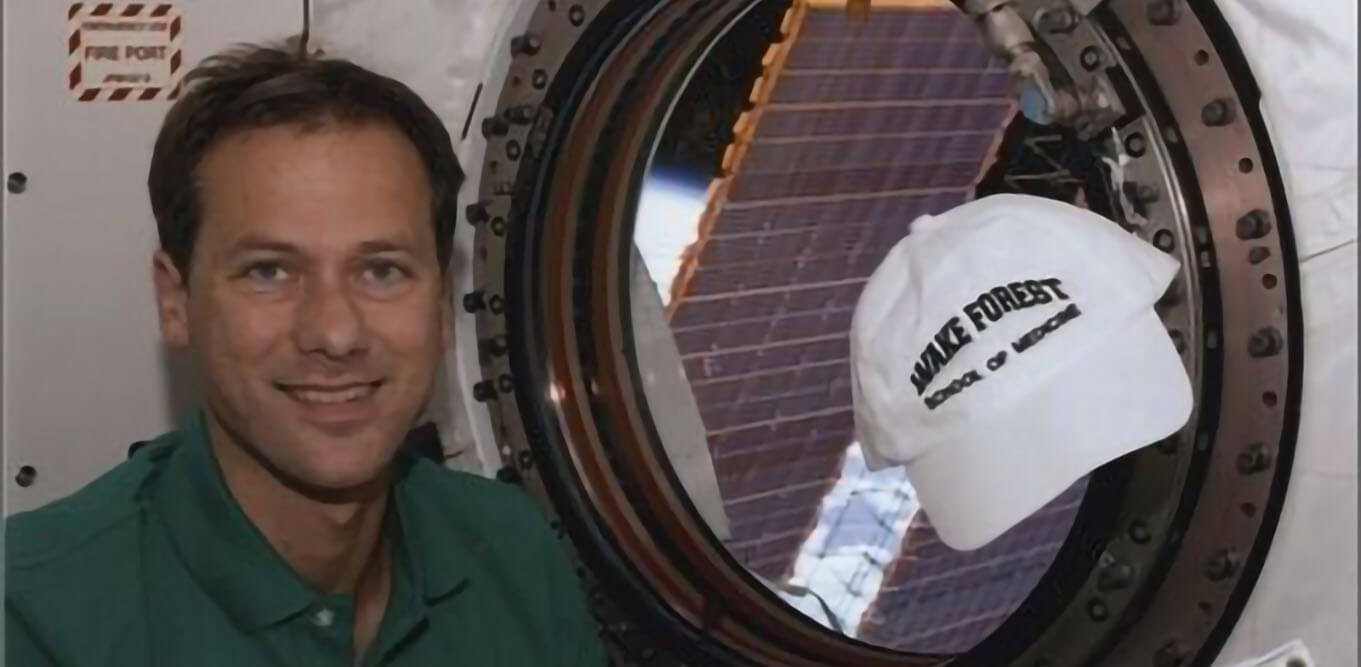Thomas Marshburn, MD, a native of Statesville, North Carolina, always had an interest in space and medicine. When he learned that Phillip Hutchins, PhD, who is now professor emeritus in the Department of Translational Neuroscience, was conducting research on spaceflight physiology at Wake Forest University School of Medicine, Marshburn’s decision on where he wanted to attend medical school was settled.
Marshburn worked with Hutchins and his team during his sophomore year and throughout his summers of medical school. As a medical student, Marshburn vividly remembers his time in the classroom and anatomy laboratory; however, he credits his patient care experiences during his third and fourth years as to truly shaping him into the physician, and in many ways, the person he is today.
 |
“My education at Wake Forest University School of Medicine, and my research there, opened the door for my successful application to the first class of NASA’s brand new Space Medicine Fellowship. I couldn’t have predicted that opportunity would arise, but Wake Forest made it possible for me to be accepted into the new burgeoning world of health in human spaceflight.” – Thomas Marshburn, MD ‘89 |
After completing his emergency medicine residency in Toledo, Ohio, Marshburn was accepted into the first class of the NASA/University of Texas Medical Branch Space Medicine Fellowship in Galveston, Texas. Throughout the mid-1990s and into the early 2000s, Marshburn served as a NASA flight surgeon where he would provide medical care to astronauts and their families. In this role, he would largely act as medical manager for the astronaut corps to ensure fitness for flight. Flight surgeons also train astronauts on space medical procedures and support space missions in mission control.
In May 2004 Marshburn was selected by NASA to become an astronaut. He completed astronaut candidate training in February 2006 – this training included scientific and technical briefings, intensive instruction in Shuttle and International Space Station systems, physiological training, T-38 flight training and water and wilderness survival training. He was then qualified for various technical assignments within the astronaut office and future flight assignments as a mission specialist.
Marshburn's spaceflight missions:
- STS-127/Endeavour/International Space Station Assembly Mission 2J/A (July 15 to July 31, 2009): The crew completed the construction of the KIBO Japanese Experiment Module, installed scientific experiments on its Exposed Facility and delivered critical spare parts and replacement batteries to the orbital complex. Marshburn performed three spacewalks for a total of 18 hours and 59 minutes. The mission was accomplished in 248 orbits of the Earth, traveling 6,547,853 million miles in 15 days, 16 hours, 44 minutes and 58 seconds.
- Expedition 34/35/ Soyuz TMA-07M (December 19, 2012 to May 14, 2013): Marshburn launched aboard Soyuz TMA-07M from the Baikonur Cosmodrome in Kazakhstan. The mission was accomplished in 2,336 orbits of the Earth and traveled almost 62 million miles.
- SpaceX Crew Dragon Endurance/Crew-3 (November 10, 2021 to May 6, 2022): Crew-3 astronauts launched aboard the SpaceX Crew Dragon Endurance spacecraft from NASA’s Kennedy Space Center in Florida. During their science expedition the astronauts conducted experiments including: a study on concrete hardening in microgravity, research on cotton varieties that could help develop drought-resistant plants and executed a space archaeology study that could provide information that contributes to the design of future space habitats. They traveled 75,060,792 miles during their 177 days in orbit and completed 2,832 orbits around Earth.
Marshburn retired from NASA on Dec. 31, 2022 after completing 28 years with the agency – 18 years as an astronaut and 10 as a flight surgeon. He now works at Sierra Space as the chief medical officer (CMO). Sierra Space is a leading commercial space company building the first end-to-end business and technology platform in space to benefit life on Earth. The company aims to build the future of space transportation with their Dream Chaser spacecraft, commercial space destinations with expandable space station and the enabling applications that will help to build a vibrant, growing and accessible commercial space economy.
In his CMO role, Marshburn serves the engineers that design and build Sierra Spaces’ Dream Chaser and LIFE expandable habitat, which helps to ensure that future astronauts can work efficiently and safely in low Earth orbit. Marshburn will also soon be starting a selection process for astronaut corps where he will build the expertise and process needed for their medical screening and then later leading a team to provide medical care to space flyers to ensure their fitness for flight.










